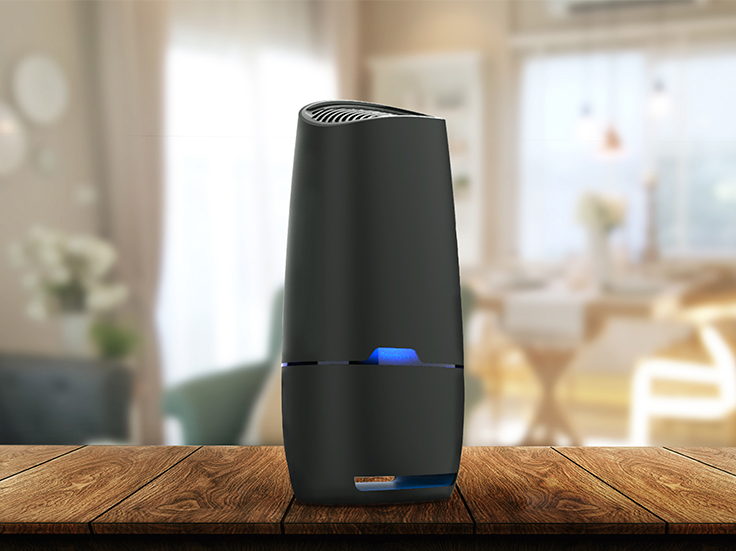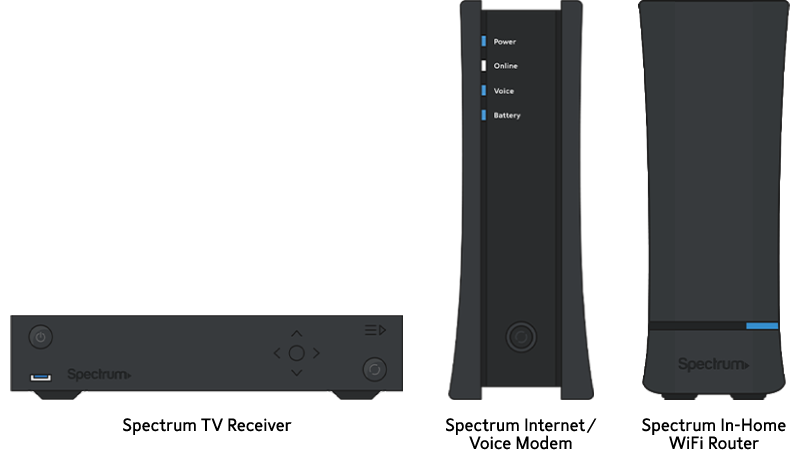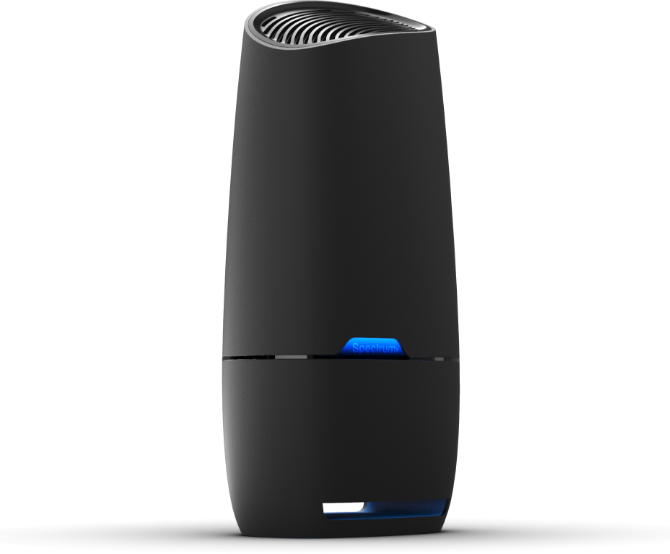Spectrum Internet and WiFi are not the same thing. Spectrum Internet is the service that provides internet access, while WiFi is the wireless network within your home.
Spectrum Internet offers high-speed internet services to households and businesses. It delivers a stable connection through a modem, connecting users to the World Wide Web. WiFi, on the other hand, is a technology that allows devices to connect to the internet wirelessly.
A router broadcasts the WiFi signal within a certain range, enabling wireless connectivity for laptops, smartphones, and other devices. Both services work together to provide a seamless internet experience at home. Understanding the difference helps in optimizing your home network setup for the best performance.

Credit: corporate.charter.com
Spectrum Internet Basics
Spectrum Internet offers reliable and fast service. Many people wonder if Spectrum Internet and WiFi are the same. They are not. Let’s dive into the basics of Spectrum Internet.
Service Overview
Spectrum Internet provides high-speed internet to homes and businesses. It uses cable technology to deliver fast and consistent service. Spectrum also offers various internet plans to meet different needs.
| Plan Name | Speed | Best For |
|---|---|---|
| Internet Standard | Up to 200 Mbps | Small families |
| Internet Ultra | Up to 400 Mbps | Gamers |
| Internet Gig | Up to 1 Gbps | Large homes |
Key Features
- High Speed: Enjoy speeds up to 1 Gbps.
- No Data Caps: Unlimited data usage.
- Free Modem: Modem included at no extra cost.
- Security Suite: Protect your devices from threats.
- 24/7 Support: Customer support available anytime.
Spectrum Internet is not the same as WiFi. WiFi is a way to connect devices wirelessly to the internet. Spectrum Internet provides the connection to the internet itself.
To use WiFi, you need a router. Spectrum offers a router for a small fee, or you can use your own.
Understanding Wifi
Wifi is a technology for wireless local area networking. It lets devices like smartphones, laptops, and tablets connect to the internet without using cables. Wifi has become essential in homes, schools, and offices.
Wireless Connectivity
Wireless connectivity means connecting devices to the internet without wires. Wifi allows devices to connect to a network through a router. This router receives internet signals from an ISP like Spectrum and sends them to your devices.
| Devices | Connection Type |
|---|---|
| Smartphones | Wireless |
| Laptops | Wireless |
| Tablets | Wireless |
Wireless connectivity offers flexibility and convenience. You can move around freely while staying connected. No need for tangled wires or limited movement.
Common Uses
People use Wifi for many activities. Here are some common uses:
- Browsing the web
- Streaming videos
- Online gaming
- Video calls
- Working from home
Wifi supports a wide range of devices. It makes life easier and more connected. Spectrum offers both internet and Wifi services, but they are not the same thing. Internet refers to the global network, while Wifi is how devices connect to this network wirelessly.
Differences Between Internet And Wifi
Understanding the differences between Internet and Wifi can be confusing. Many people use these terms interchangeably. They are not the same thing. Knowing what separates them can help you get the best out of your technology.
Technology Comparison
The Internet is a global network. It connects millions of private, public, academic, business, and government networks. These networks exchange data using the Internet Protocol Suite (TCP/IP).
Wifi, on the other hand, is a wireless networking technology. It allows devices like smartphones, laptops, and tablets to connect to the Internet without wires. Wifi uses radio waves to provide high-speed Internet and network connections.
| Aspect | Internet | Wifi |
|---|---|---|
| Definition | Global network of networks | Wireless local area network |
| Technology | TCP/IP | Radio waves |
| Connection Type | Wired or wireless | Wireless |
| Scope | Global | Local |
Usage Scenarios
Different usage scenarios highlight the differences between Internet and Wifi. Here are some examples:
- Internet: Browsing websites, streaming videos, social media, online gaming
- Wifi: Home or office networking, connecting multiple devices, mobility within a range
At home, you might use Wifi to connect your phone and laptop to the Internet. In a public place, Wifi allows you to access the Internet without using mobile data. Both technologies are important. Yet, they serve different purposes.
How Spectrum Delivers Internet
Spectrum is known for its reliable internet service. But how does Spectrum deliver this service to your home? Let’s explore the key components: cable infrastructure and service plans.
Cable Infrastructure
Spectrum uses a robust cable infrastructure to deliver internet. This infrastructure is based on coaxial cables and fiber-optic technology.
Coaxial cables are used for short distances. They are durable and provide strong signals. For longer distances, Spectrum relies on fiber-optic cables. These cables use light to transmit data quickly.
This combination ensures a stable and fast internet connection. With this infrastructure, Spectrum can deliver high-speed internet to many homes.
Service Plans
Spectrum offers various service plans to meet different needs. These plans vary in speed and price. Here’s a table to show the different options:
| Plan | Speed (Mbps) | Price (per month) |
|---|---|---|
| Basic | 100 | $49.99 |
| Standard | 200 | $69.99 |
| Premium | 400 | $89.99 |
Each plan includes unlimited data. This means no extra charges for heavy usage. Spectrum also provides a free modem with each plan. This makes it easy to set up your internet connection.
With these options, customers can choose a plan that fits their needs and budget. Whether you need basic internet for browsing or high-speed for gaming, Spectrum has a plan for you.
Role Of Routers And Modems
The role of routers and modems is crucial in understanding Spectrum Internet and WiFi. These devices make your internet experience fast and reliable. They connect your home to the digital world. Learn how they work together to provide seamless internet access.
Connecting Devices
Routers and modems are essential for connecting devices to the internet. The modem brings internet from the provider to your home. The router then distributes this connection to multiple devices.
Imagine the modem as a bridge and the router as a traffic controller. The modem connects to Spectrum’s network. The router then directs this connection to your devices.
Here’s a simple table explaining their roles:
| Device | Function |
|---|---|
| Modem | Connects to the internet service provider |
| Router | Distributes the internet connection to devices |
Ensuring Speed And Stability
Routers and modems play a key role in ensuring speed and stability. A good modem can handle high-speed internet plans. The router then ensures that this speed reaches your devices.
To maintain a stable connection, place your router in a central location. This helps in distributing the WiFi signal evenly. Also, avoid placing the router near large metal objects or thick walls.
Follow these tips for better speed and stability:
- Update your router’s firmware regularly.
- Use a dual-band router for better performance.
- Limit the number of devices connected at the same time.
By understanding the roles of routers and modems, you can optimize your internet setup. This ensures a smooth and fast online experience.

Credit: www.spectrum.net
Setting Up Spectrum Wifi
Setting up your Spectrum Wifi is simple. Follow these steps for a smooth process. Learn how to install and configure your Wifi for the best performance.
Installation Process
Here is a step-by-step guide to install your Spectrum Wifi:
- Unbox your equipment: Ensure you have the modem, router, power cords, and cables.
- Connect the modem: Plug the modem into a power source and connect it to a cable outlet.
- Wait for the modem to activate: This process may take a few minutes. The indicator lights should turn solid.
- Connect the router: Use an Ethernet cable to connect the modem to the router.
- Power up the router: Plug the router into a power source and wait for the lights to stabilize.
- Connect your devices: Use the default network name (SSID) and password to connect your devices to the Wifi network.
Configuration Tips
Follow these tips to configure your Spectrum Wifi for optimal performance:
- Change the default SSID and password: Use a unique SSID and a strong password for better security.
- Update firmware: Ensure your router has the latest firmware for improved performance and security.
- Choose the best channel: Use a Wifi analyzer app to find the least congested channel.
- Position your router: Place the router in a central location, away from walls and obstructions.
- Enable WPA3 encryption: Use the latest encryption standard for better security.
With these steps and tips, your Spectrum Wifi will be up and running smoothly. Enjoy fast and secure internet connectivity at home.
Troubleshooting Common Issues
Many users experience issues with their Spectrum Internet and WiFi. Troubleshooting these problems can save you time and frustration. This guide covers common problems and their solutions.
Connectivity Problems
Connectivity problems are common with Spectrum Internet and WiFi. Your device might not connect to the internet. Here are steps to troubleshoot connectivity issues:
- Restart your modem and router: Unplug them, wait 30 seconds, and plug them back in.
- Check for loose cables: Ensure all cables are securely connected.
- Update your device’s software: Make sure your device has the latest software updates.
- Reset your network settings: Go to network settings and select reset.
Speed Optimization
Slow internet speeds can be frustrating. Optimizing your Spectrum WiFi can improve your speed. Follow these tips to enhance your internet speed:
- Place your router in a central location: This ensures better coverage.
- Avoid physical obstructions: Keep the router away from walls and large objects.
- Limit connected devices: Disconnect devices not in use to free up bandwidth.
- Use a wired connection: Ethernet cables provide a stable connection.
| Issue | Solution |
|---|---|
| Connectivity Problems | Restart devices, check cables, update software, reset settings |
| Speed Optimization | Central router placement, avoid obstructions, limit devices, use wired connection |
Customer Experiences
Understanding customer experiences is vital to distinguish between Spectrum Internet and WiFi. Various users have shared their thoughts and stories. This blog section covers user reviews and case studies.
User Reviews
Many customers are pleased with Spectrum’s services. Here are some reviews:
- John D.: “Spectrum Internet is fast and reliable. My family loves it.”
- Mary S.: “WiFi setup was easy with Spectrum. No issues so far.”
- Alex P.: “Customer service helped me understand the difference. Very helpful.”
Common themes from reviews include:
- Speed: Users appreciate the high-speed internet.
- Reliability: Most customers find the service reliable.
- Support: Many praise Spectrum’s customer support.
Case Studies
Real-life case studies highlight Spectrum’s value. Below are examples:
| Case Study | Details |
|---|---|
| Family Home | A family of four used Spectrum Internet and WiFi. They streamed movies, worked from home, and attended online classes without issues. |
| Small Business | A local café implemented Spectrum WiFi. Customers enjoyed seamless connectivity while sipping their coffee. |
| Remote Worker | An individual working remotely used Spectrum Internet. They reported zero downtime during crucial meetings. |
These case studies show that both Spectrum Internet and WiFi cater to different needs. Whether for home, business, or remote work, customers find value in both services.
Future Of Spectrum Internet And Wifi
The future of Spectrum Internet and Wifi is full of exciting changes. New technologies and service improvements are on the horizon. These changes will make your internet and wifi experience better than ever.
Upcoming Technologies
New technologies are shaping the future of Spectrum Internet and Wifi. Here are some key advancements:
- 5G Integration: Faster speeds and lower latency.
- Wi-Fi 6: Improved connectivity and higher capacity.
- Fiber Optics: Enhanced reliability and speed.
Service Improvements
Spectrum is dedicated to improving its services. Here are some expected improvements:
- Better Customer Support: 24/7 support and faster resolutions.
- Advanced Security: Enhanced protection from online threats.
- Flexible Plans: More options to suit different needs.
The future of Spectrum Internet and Wifi is bright. Stay tuned for these exciting developments.

Credit: www.spectrum.com
Frequently Asked Questions
What Is Spectrum Internet?
Spectrum Internet is a broadband service provided by Charter Communications. It offers high-speed internet to homes and businesses.
What Is Spectrum Wifi?
Spectrum WiFi is the wireless network created by a Spectrum router. It allows multiple devices to connect to the internet without cables.
Are Spectrum Internet And Wifi Different?
Yes, they are different. Spectrum Internet is the service itself. Spectrum WiFi is the wireless access to the internet provided by Spectrum.
Do I Need Spectrum Wifi For Internet?
No, you don’t need WiFi to use Spectrum Internet. You can also connect using an ethernet cable.
Conclusion
Understanding the difference between Spectrum Internet and WiFi is crucial. Spectrum Internet is the service that provides access. WiFi distributes this connection wirelessly within your home. Both are essential for seamless browsing. Choose the right setup for optimal performance and connectivity.
Stay informed to make the best decision for your needs.
